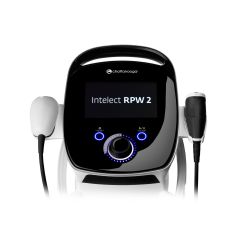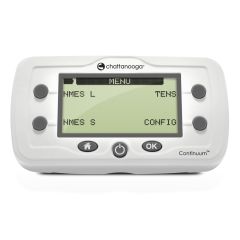An Evidence-Based Approach to Addressing Three Common Impairments Associated with Knee Osteoarthritis
Knee osteoarthritis (KOA) is a degenerative condition that can be challenging to manage. Often multiple tissues are involved which collectively can have a profound impact on an individual’s mobility and daily activity.
Patients that have moderate to severe OA often struggle with other health conditions. Poor metabolic function can retard tissue healing which further complicates these cases. Examples of common KOA comorbidities include obesity, cardiovascular pathology, and diabetes. Prolonged immobility can exacerbate these conditions.
A focus on reducing pain quickly is central to successfully managing KOA patients. While bone on bone pathology is often a part of their complaint, rarely is it the whole story. Soft tissue dysfunctions are often part of a KOA presentation that can be improved with therapy.
Three common KOA impairments and treatment options include:
1. Capsular Stiffness: normally caused by repeated joint inflammation leading to capsular fibrosis and scar formation which ultimately can contribute to restrictions in knee arthrokinematics.
Besides stretching and mobilization, a treatment option to address capsular stiffness and pain is High Intensity Laser Therapy (HILT). A recent study showed that HILT + exercise is more effective than exercise alone at improving the pain and function of KOA patients. Laser can play a more beneficial and rapid role in pain control.1
Extracorporeal shockwave therapy (ESWT) devices, such as the Chattanooga® Intelect® RPW 2, are another tool that may help with decreasing pain and improving knee function when stiffness is present. The concept of providing a painful stimulus to an arthritic joint line might not seem intuitive, but multiple studies have shown that ESWT can improve function and decrease pain associated with KOA 2.
While the exact mechanism is not known, the high energy sound waves ESWT imparts to tissue have been shown to decrease pain and improve blood flow to various soft tissues.3 These factors contribute to accelerated tissue repair and better functional improvement than exercise alone. 2
2. Muscle Weakness: another primary impairment associated with KOA. Quadriceps weakness is often associated with arthrogenic muscle inhibition (AMI) which is different from disuse atrophy. AMI is a protective mechanism that leads to muscle weakness via neural inhibition.4 While AMI can negatively impact any muscle around a painful joint, the quadriceps is the muscle group commonly impacted with KOA. Failing to address pain and swelling at the joint can lead to prolonged weakness and muscle atrophy.
While there are several choices clinicians have at their disposal to reduce joint pain and inflammation, treating the weakened quadriceps with neuromuscular electrical stimulation (NMES), such as the Chattanooga Continuum™ device, may be the most direct approach to stem muscle atrophy.
When NMES is applied at higher intensities, it can recruit the larger motor units needed to improve force output and build strength at the quadriceps. Without this tool, patients may not be able to volitionally create the same force output due to pain signals coming from the knee. 5
When used at submaximal intensities in combination with exercise, NMES has also been shown to help reduce pain and improve function for KOA patients. Additional benefits from NMES include increased flexion range of motion, preservation of muscle girth at the thigh, improved muscle thickness at the VMO, and reduced knee stiffness scores when compared to exercise only. 6
3. Swelling: the final issue that may need to be addressed in acute KOA flare-ups. The good news is that swelling can be addressed with thermal agents that are available in most clinics and home settings. A Cochrane review on KOA showed that thermal agents, compression, and improved activity should help in this area.7
One final management note: for moderate to severe KOA cases, addressing symptoms alone might not be sufficient to restore function. Consideration of a high-quality, knee OA brace may be a welcomed addition to the plan of care.
These specially designed braces help unload painful joint surfaces and provide added stability a degenerated joint may no longer be capable of providing independently. The relief these devices may provide can help bridge the path to improved function.
Bracing can be an important addition to any noninvasive, long-term plan of care when trying to avoid surgery or when higher levels of recreational activity are desired. Examples of these braces can be found here.
Ideally, by addressing KOA as a collection of subcategories, both therapists and patients can better understand that OA isn’t the dead-end road that many fear.
References:
- Nazari A, Moezy A, Nejati P, Mazaherinezhad A. Efficacy of high-intensity laser therapy in comparison with conventional physiotherapy and exercise therapy on pain and function of patients with knee osteoarthritis: a randomized controlled trial with 12-week follow up. Lasers Med Sci. 2019 Apr;34(3):505-516. doi: 10.1007/s10103-018-2624-4. Epub 2018 Sep 3. PMID: 30178432.
- Cp A, Jayaraman K, Babkair RA, et al. Effectiveness of extracorporeal shock wave therapy on functional ability in grade IV knee osteoarthritis - a randomized controlled trial. Sci Rep. 2024;14(1):16530. Published 2024 Jul 17. doi:10.1038/s41598-024-67511-x
- Fricová J, Rokyta R. The effects of extracorporeal shock wave therapy on pain patients. Neuro Endocrinol Lett. 2015;36(2):161-4. PMID: 26071587.
- Norte G, Rush J, Sherman D. Arthrogenic Muscle Inhibition: Best Evidence, Mechanisms, and Theory for Treating the Unseen in Clinical Rehabilitation. J Sport Rehabil. 2021 Dec 9;31(6):717-735. doi: 10.1123/jsr.2021-0139. PMID: 34883466.
- Arhos EK, Ito N, Hunter-Giordano A, Nolan TP, Snyder-Mackler L, Silbernagel KG. Who's Afraid of Electrical Stimulation? Let's Revisit the Application of NMES at the Knee. J Orthop Sports Phys Ther. 2024 Feb;54(2):101-106. doi: 10.2519/jospt.2023.12028. PMID: 37904496; PMCID: PMC10872626.
- Moezy A, Masoudi S, Nazari A, Abasi A. A controlled randomized trial with a 12-week follow-up investigating the effects of medium-frequency neuromuscular electrical stimulation on pain, VMO thickness, and functionality in patients with knee osteoarthritis. BMC Musculoskelet Disord. 2024 Feb 20;25(1):158. doi: 10.1186/s12891-024-07266-8. PMID: 38378564; PMCID: PMC10877797.
- Brosseau L, Yonge KA, Robinson V, Marchand S, Judd M, Wells G, Tugwell P. Thermotherapy for treatment of osteoarthritis. Cochrane Database Syst Rev. 2003;2003(4):CD004522. doi: 10.1002/14651858.CD004522. PMID: 14584019; PMCID: PMC6669258.



